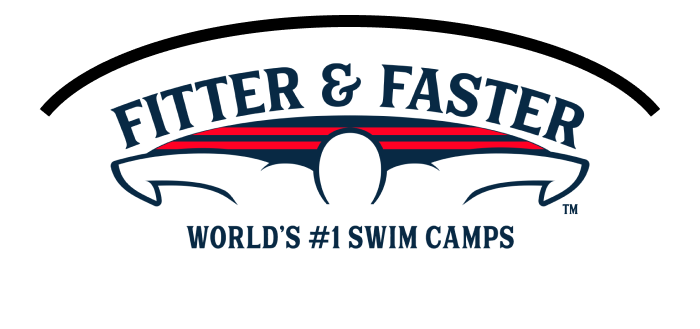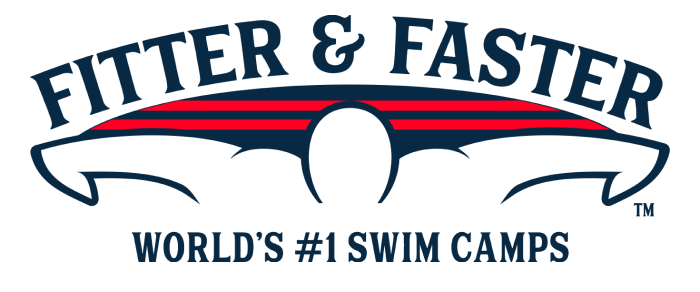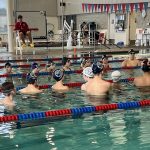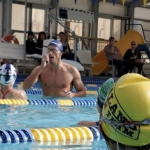Stony Brook, NY Swim Camp Series (Ages 12 & Over)
The Stony Brook School
1 Chapman Pkwy,
Stony Brook,
NY 11790
- days
- hours
- minutes
- seconds
Introduction
Fitter & Faster is producing a series of swim camps and a video filming & analysis session for competitive swimmers ages 12 & over at The Stony Brook School in Stony Brook, New York during 2025! Click here for the swim camp series page for ages 9 to 11.
STONY BROOK, NY SWIM CAMP SERIES (Ages 12 & Over)
-> Comprehensive Freestyle Racing Swim Camp (September 13 & 14, 2025)
-> Comprehensive Backstroke Racing Swim Camp (December 28 & 29, 2025)
VIDEO FILMING & ANALYSIS
December 28, 2025 (3:30-5:30 PM): Provide your swimmer with the chance to receive professional video analysis of their stroke, just like the pros. Choose to have one stroke filmed and analyzed with a single registration, or save by selecting the Camp + Video Bundle, which includes both days of the swim camp along with filming and analysis of all four strokes.
Click the “Curriculum Menu” below for details on the swim camp and video session.
-> Availability in each session is limited to 22 participants to ensure the highest level learning experience.
-> SAVE when you purchase an “Entire Camp Bundle” for your swimmer.
Select a curriculum below
COMPREHENSIVE FREESTYLE RACING SWIM CAMP: September 13 & September 14, 2025
Freestyle is the first stroke we learn. It’s the stroke we swim the most at practice. There are more freestyle races and relays at meets... and it is the fastest stroke to move through the water. As with any other stroke, the more efficient and powerful your technique - the more success you will experience with your practices and freestyle races as your career progresses. Over two days, your swimmer, no matter their level, will improve their freestyle technique, racing and training skills!
- DAY 1 (Saturday, September 13): FREESTYLE TECHNIQUE: Cultivating good habits to swim high level freestyle begins as soon as you learn the stroke. Even if your swimmer is already in high school - it’s never too late to begin practicing techniques that will drastically improve their efficiency, power and times. Today, your swimmer will work on techniques to strengthen their bodyline, catch, kick, pull, and breathing pattern.
- Bodyline: A freestyle race is going to be fastest with the proper bodyline. Even the slightest adjustment of the chin, neck, and/or back can make a huge difference. As swimmers mature in the sport and grow physically, their body position shifts and often bad habits are created. Participants will learn and practice proper posture and engagement of their core to have a strong foundation for better technique - creating a full-body connection for more hydrodynamic and efficient strokes.
- Rotation: Freestyle is fastest and most efficient when a swimmer’s body is “rotating” around their spine with each stroke. This part of swimming freestyle has a big effect on maintaining a proper bodyline. Participants will practice activating their core muscles to form a powerful connection from head to toe with every stroke - resulting in faster freestyle.
- Kicking: A swimmer’s kick is the motor behind their freestyle! There are obviously proper and improper ways to kick which we will review at the camp. Just as important, however, is practicing the complexities of how and when swimmers need to “shift gears” in their legs to become stronger and faster racers.
- Pull: The pull in freestyle keeps a swimmer balanced and accelerating forward. Essentially the best swimmers are creating a paddle with every stroke. The clinicians will work with participants to establish an early vertical forearm “the catch”, enabling the swimmer to put immediate pressure back on the water. Properly completing the stroke keeps the swimmer moving forward efficiently and fast.
- DAY 2 (Sunday, September 14): FREESTYLE RACING AND TRAINING SKILLS: The technique for swimming a fast freestyle race changes depending on the distance. Learning to prioritize tempo and length of stroke, while maintaining efficiency has a huge impact on maximizing speed for sprints or increasing endurance for distance races.
- Stroke Length: A long stroke will enable your swimmer to “catch” and hold onto more water to propel them as they swim. Whereas, a short stroke is inefficient and not sustainable for very long. The clinicians will work with participants on this important skill for fast swimming.
- Tempo: Tempo is the rate at which a swimmer is moving their arms and legs. When sprinting short races many swimmers often tend to take too many strokes (“spin their wheels”) and not “hold onto the water”. At this camp we will explore different tempos that suit your swimmer for different distances.
- Pacing/Control: A swimmer’s tempo will change depending on the race that they are swimming. It may also change at different points during the same race! Your elite clinician will teach participants how to manipulate their tempo, speed and energy at different points in a race. This is called Pacing or “Control”.
- Breathing Pattern: Establishing a breathing pattern will help the swimmer stay focused and relaxed during their swim. It will also help them finish the race with enough oxygen to close the race at full speed.
- Speed Set: At the end of this session your swimmer will do a short and fast swim set to practice everything they have learned over the past two days.
COMPREHENSIVE BACKSTROKE RACING SWIM CAMP: December 28 & December 29, 2025
Over two days, your swimmer will work with Fitter & Faster's world-class clinicians to elevate their backstroke. They'll focus on refining bodyline, catch, kick, and pull for improved efficiency. They'll then explore strategies for tempo, stroke length, and efficiency to enhance their racing performance. Whether your swimmer is new to backstroke or looking to refine their technique, this camp offers valuable insights to help them progress in the pool.
- DAY 1 (Sunday, December 28): BACKSTROKE TECHNIQUE: Cultivating good habits to swim high level Backstroke begins as soon as you learn the stroke. Even if your swimmer is already in high school - it’s never too late to begin practicing techniques that will drastically improve their efficiency, power and times. Today, your swimmer will work on techniques to strengthen their bodyline, catch, kick, and pull - resulting in faster backstroke races.
- Bodyline: A competitive swimmer’s bodyline is the key to fast swimming. The name of the game is to eliminate all extra movement of the body including even the slightest bobbing, wiggling. Participants will learn and practice proper posture and engagement of their core to have a strong foundation for better technique - creating a full-body connection for more hydrodynamic and efficient backstroke.
- Rotation: Backstroke is fastest and most efficient when a swimmer’s body is “rotating” around their spine with each stroke. This part of swimming Backstroke has a big effect on maintaining a proper bodyline. Participants will practice activating their core muscles to form a powerful connection from head to toe with every stroke - resulting in faster backstroke!
- Kick: A swimmer’s kick is the motor behind their Backstroke! There are obviously proper and improper ways to kick which we will review at the camp. Just as important, however, is practicing the complexities of how and when swimmers need to “shift gears” in their legs to become stronger and faster racers.
- Pull: Just like in freestyle, the pull in backstroke keeps a swimmer balanced and accelerating forward. Essentially the best swimmers are creating a paddle with every stroke. The clinicians will work with participants to establish an early vertical forearm “the catch”, enabling the swimmer to put immediate pressure back on the water. Properly completing the stroke keeps the swimmer moving forward efficiently and fast.
- DAY 2 (Monday, December 29): BACKSTROKE RACING AND TRAINING SKILLS: On Day 1, participants practiced high performance backstroke techniques. Now, let’s leverage these skills to develop strong racing and training habits. Learning to prioritize tempo and length of stroke, while maintaining efficiency has a huge impact on maximizing speed in backstroke.
- Stroke Length: A long stroke will enable your swimmer to “catch” and hold onto more water to propel them as they swim. Whereas, a short stroke is inefficient and not sustainable for very long. The clinicians will work with participants on this important skill for fast swimming.
- Tempo: Tempo is the rate at which a swimmer is moving their arms and legs. When sprinting short races many swimmers often tend to take too many strokes (“spin their wheels”) and not “hold onto the water”. At this camp we will explore different tempos that suit your swimmer for their backstroke races.
- Pacing/Control: A swimmer’s tempo will change depending on the backstroke race that they are swimming. It may also change at different points during the same race! Your elite clinician will teach participants how to manipulate their tempo, speed and energy at different points in a race. This is called Pacing or “Control”.
- Backstroke Starts: The fastest part of every single race is the start - that’s no different for backstroke! Your swimmer is going to learn and practice starting a high performance backstroke race. We’re going to work on a “clean”, fast water entry in which the athlete carries the momentum from the start into their streamline, underwater dolphin kicking and breakout.
- Speed Set: At the end of this session your swimmer will do a short and fast swim set to practice everything they have learned over the past two days.
VIDEO FILMING & ANALYSIS: December 28, 2025
Since so much of the stroke happens below water – it is incredibly important to see what’s going on below the surface! Small adjustments to your stroke can lead to big time drops! This is your opportunity to get beautiful footage of your stroke and get analysis from an expert… and you can review with your coach as well!
- ANALYSIS: Our Fitter and Faster expert will use a video analysis application to record their comments on your technique. They will use slow motion, pause the video at specific points, and draw on the swimmer's video all while explaining where opportunities for improvement are. Each stroke will have approximately 3 to 5 minutes of expert commentary that you can review with your coaches at home!
- DRILL RECOMMENDATIONS: You will receive recommendations for drills to correct the technique of each swimmer.
- SIGN UP: Select to have one stroke filmed. Or, SAVE by choosing to have all four strokes filmed. The "multi-stroke options" are for individual swimmers and cannot be split.
- ARRIVING AT THE POOL (Retain your order number): You will receive an e-mail approximately one week before the filming session with the specific time for your swimmer to check in, warm up, and be filmed. Please retain your order number - this is how swimmers will be identified on that schedule. When you arrive at the pool, you will be greeted by Fitter & Faster staff who will provide you instructions on the filming process.
- WARM UP: Participants will have an opportunity to warm up before filming.
- FILMING: Our camera operator will have you swim two 25s at a strong pace of each stroke purchased (1 stroke or all 4 strokes). The filming of each stroke will take about three minutes. The video will capture a side angle and a front angle below the water to get an accurate view of your technique.
- SESSION LEGNTH: Depending on the number of strokes you are getting recorded, your session time will run between 5 and 15 minutes.
- TIMELINE: All videos will be analyzed and returned within 14 days of the camp. The analyzed videos along with the original video will be sent via email for you to keep!
SESSION START TIMES (JUNE):
- September 13 & 14, 2025 (BOTH DAYS): Check-in 2:15 PM, Camp 2:30-5:30 PM
- December 28 & 29, 2025:
- DAY 1: Check-in 12:15 PM, Camp 12:30-3:30 PM
- DAY 2: Check-in 2:15 PM, Camp 2:30-5:30 PM
- Depending on the number of strokes you are getting recorded, your session time will run between 5 and 15 minutes.
- You will receive an email a week before the filming session with the specific time for your swimmer to check in, warm up, and be filmed.
- December 28, 2025: Swimmer's scheduled time will be between 3:30-5:30 PM.
- Elite Video Filming & Analysis is for ALL swimmers ages 9 & Over.
ASK QUESTIONS
Swimmers and parents are invited to ask the clinicians questions during a Q&A session. Gain insight into their training regimen, diet and nutrition, and recovery tactics.
WATCH THE CLINICIANS
Observe clinicians swim at full speed and demonstrate a progression of perfectly executed drills to achieve powerful, efficient and fast swimming.
PUT YOUR SKILLS TO THE TEST
Throughout the camp, swimmers will practice what they've learned with some of the world's most elite Swimmer Clinicians and coaches!
Take a photo, get autographs, and chat with your clinicians!
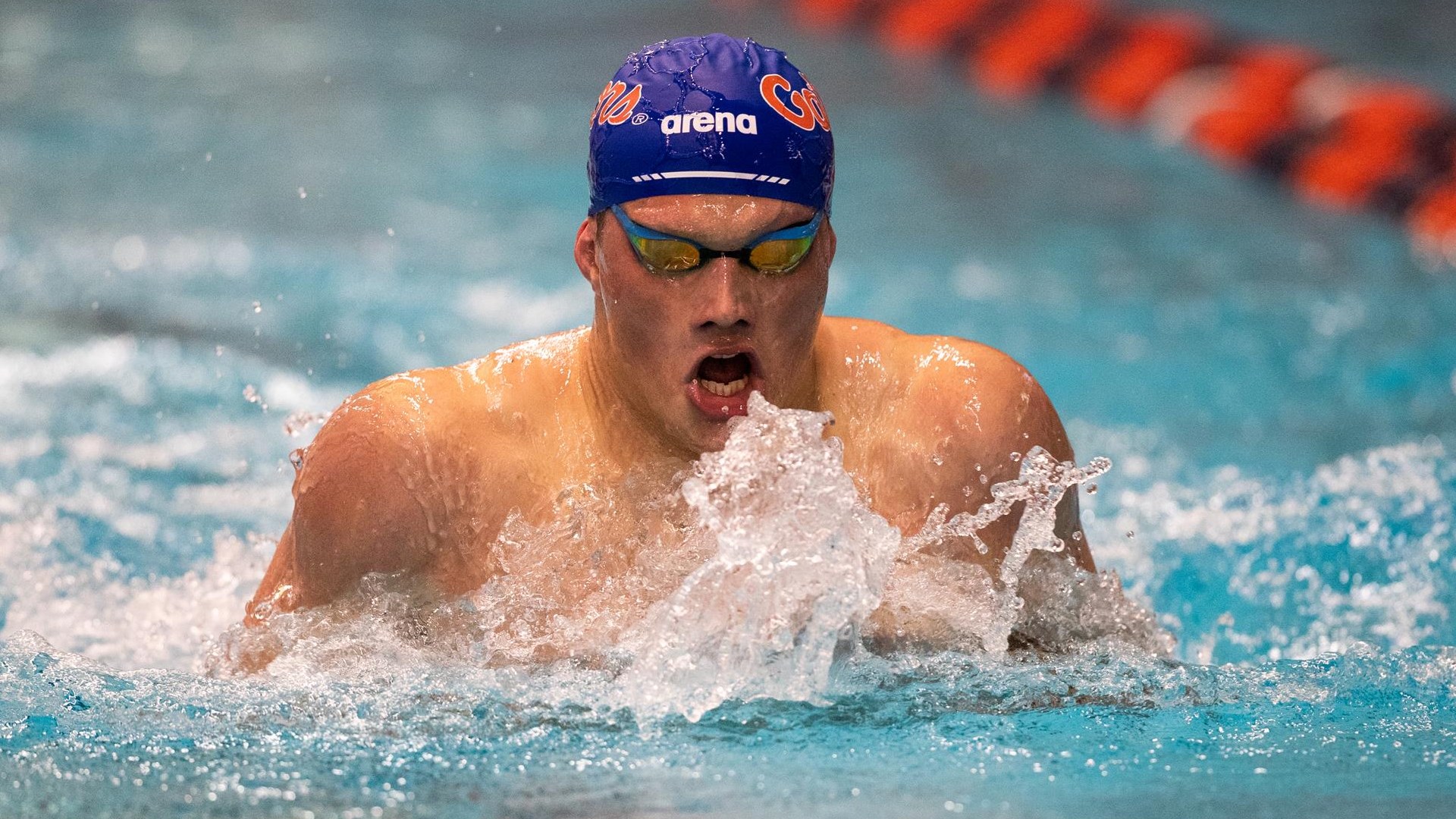
Dillon Hillis
Dillon Hillis, a two-time NCAA Division I Champion from the University of Florida, is an enthusiastic student of the sport says, "Understanding swimming from a fundamental perspective has allowed me to achieve some of my largest goals. There is always more to learn and grow from."
Inquisitive, Educated Swimmers are Faster Swimmers! Sign up today!


